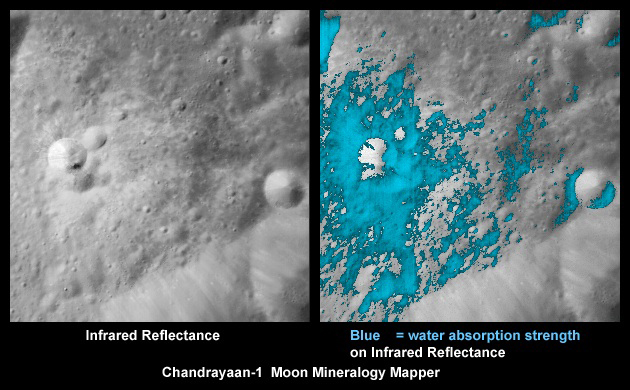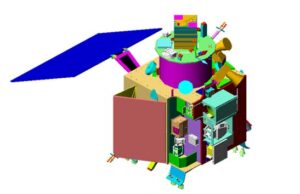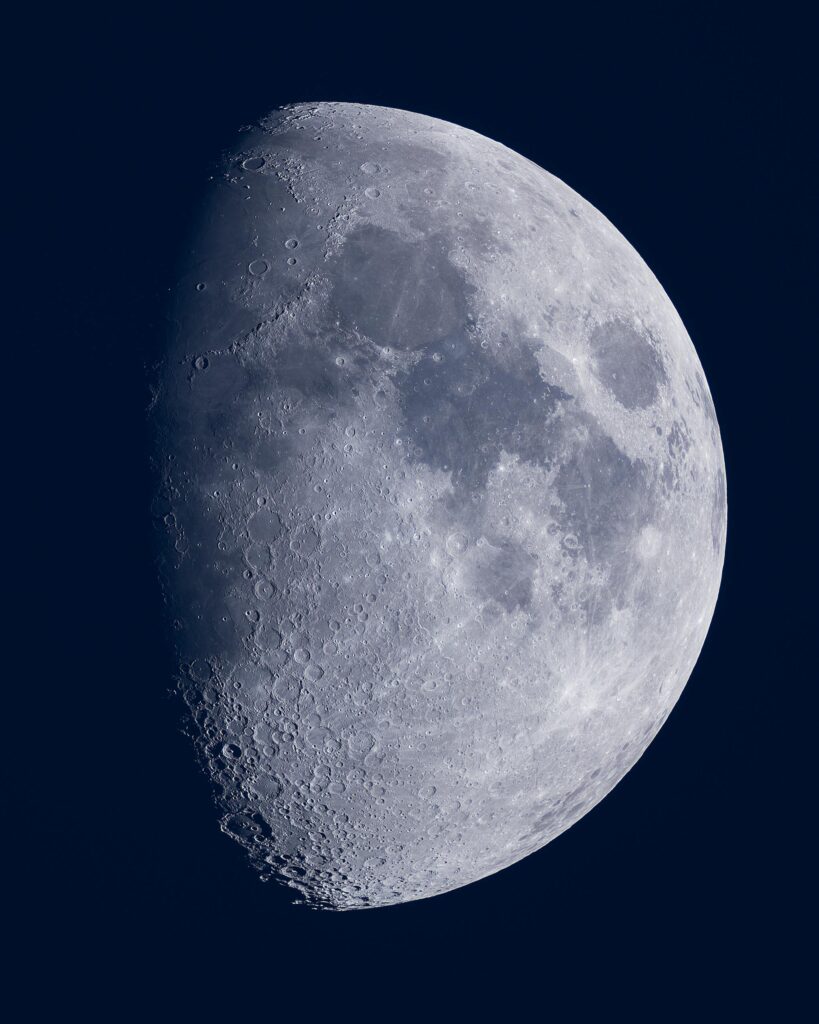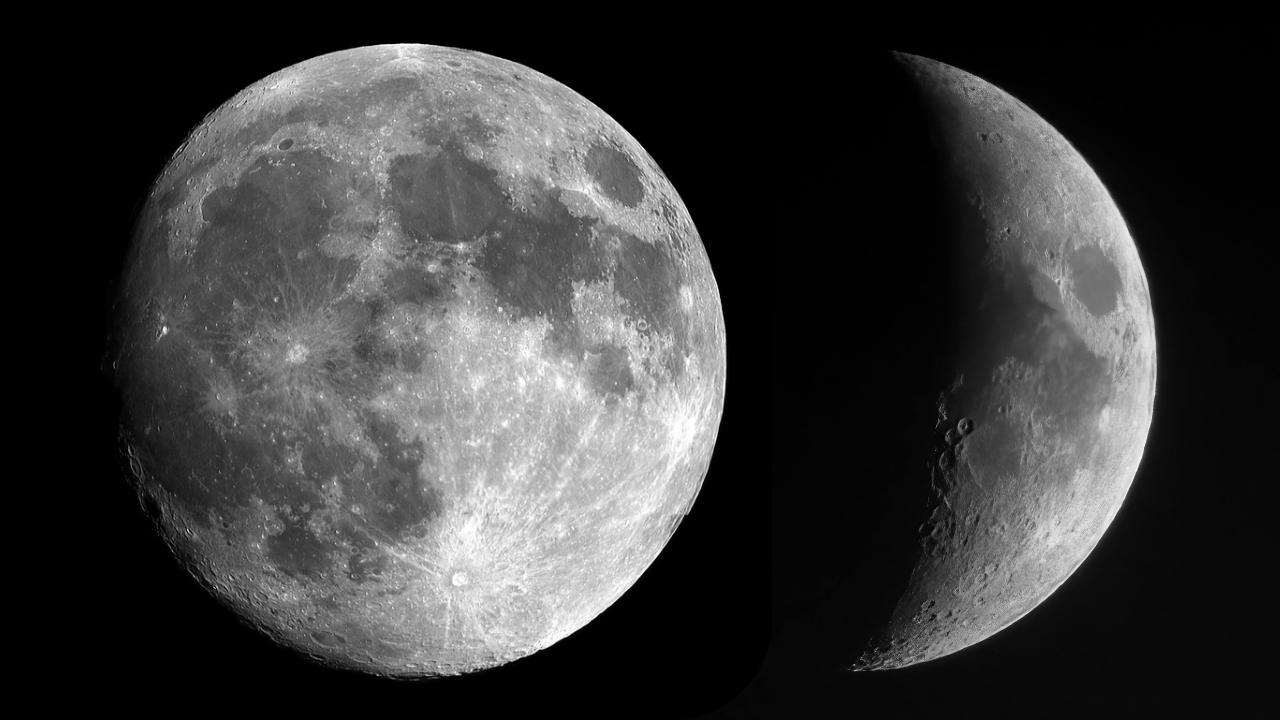The discovery of water on the moon for the first time.
India’s Chandrayaan-1 mission marked a historic milestone in space exploration by confirming the presence of water molecules on the Moon for the first time. Launched by the Indian Space Research Organisation (ISRO) on October 22, 2008. This groundbreaking discovery not only validated India’s growing prowess in space research but also paved the way for future missions aiming to utilize lunar resources for sustained human presence beyond Earth. In this article, we will explore the fascinating journey of Chandrayaan-1, India’s first lunar probe, which made history by discovering water molecules on the Moon.

History
On India’s 56th Independence Day in 2003, India’s Prime Minister Atal Bihari Vajpayee announced the Chandrayaan.
1999 → The Indian Lunar Mission concept was emerged in the meeting of the Indian Academy of Sciences.
2000 → In astronomical Society of India further discussions were carried out.
Learned members of these forums made some recommendations based on which ISRO established the National Lunar Mission Task Force. leading Indian Scientists & technologists were a part of this Task Force.
2003 (November) → Government of India approved ISRO’s proposal for Chandrayaan-1 (India’s first Moon Mission).
2008 (22 Oct) → ISRO launched Chandrayaan-1 from Satish Dhawan Space Centre, Sriharikota, Andhra Pradesh.
Indian Scientists in the Task Force were from the domain of Planetary & Space sciences, Earth Sciences, Physics, Chemistry, Astronomy, Astrophysics, Engineering, and Communication Sciences. (Moon International.
Chandrayaan-1
Meaning of Chandrayaan
- Chandra → moon
- Yaan → Craft
It is the India’s first lunar probe
Moon’s distance from the Earth → 3,84,000 km
Chandrayaan-1, India’s first lunar mission, was launched from the second launch pad at the Satish Dhawan Space Centre in Sriharikota, Andhra Pradesh, using the PSLV-C11 launch vehicle.
The spacecraft had a launch mass of 1,380 kg, with a dry mass of 560 kg.
It was launched on 22 October 2008 at 00:52 UTC (06:22 IST).
The mission was originally planned to last for two years; however, it operated successfully for 312 days (approximately 10 months).
The mission officially started on 22 October 2008 and concluded on 29 August 2009 at 1:30 IST.
The total cost of the mission was around Rs 386 crore (approximately US $60 million).
- Launch pad → Second launch pad
- Launch Mass/ Weight → 1380 kg, dry mass = 560 kg
- Launch Vehicle → PSLV-C11
- Launch Site → Satish Dhawan Space Centre, Sriharikota, Andhra Pradesh, India
- Launch Date → 22 October 2008
- Launch Time → 00:52 UTC (06:22 IST)
Mission Life → Planned: 2 years
Mission operated for → 312 days (10 months)
Start of Mission: 22 Oct 2008 (06:22 IST)
End of Mission: 29 August 2009 (1:30 IST)
- Mission cost: Rs 386 crore / US $ 60 Million
UTC – Coordinated Universal time
IST – Indian Standard Time

Payloads (Scientific Instruments) →Total = 11
Indian Instruments (Payloads built in India) (Total = 5)
- Terrain Mapping Camera (TMC)
- Hyper Spectral Imager (HySI)
- Lunar Laser Ranging Instrument (LLRI)
- High-Energy X-ray Spectrometer (HEX)
- Moon Impact Probe (MIP)
Payloads built in other countries: (Total = 6)
- Miniature Synthetic Aperture Radar (MiniSAR) → (USA)
- Chandrayaan-1 X-ray Spectrometer (CIXS) → (UK in collaboration with ISRO )
- Near-Infrared Spectrometer (SIR-2) → (Germany & ESA )
- Sub-keV Atom Reflecting Analyser (SARA) → (Sweden)
- Moon Mineralogy Mapper (M3) → (USA)
- Radiation Dose Monitor (RADOM) → (Bulgaria)
Launch Vehicle: PSLV-XL C11
PSLV-XL is a version/variant of Polar Satellite Launch Vehicle XL (PSLV). It uses 6 solid rocket strap-on motors.
Launch Vehicle is a vehicle powered by a rocket. It is used to transport a payload (a crewed spacecraft or a satellite) from Earth into Earth’s orbit or outer space.
Strap-on Motors: These are the rocket motors that are attached around the launch vehicle’s first stage.
Crewed spacecraft: A spacecraft carrying people/crew.
Crew: Group of people who operate the spacecraft.
Payload: A load carried by the vehicle which consists of scientific instruments/ satellite/ a crewed spacecraft/ uncrewed spacecraft.
-
PSLV-XL C11
PSLV-XL C11 was a launch vehicle chosen to launch Chandrayaan-1 on 22 Oct 2008.
This was PSLV’s 14th flight.
Overall height = 44.5m
Lift-off mass = 320 ton
Stages = 4
It has 4 stages. In these stages, solid & liquid propulsion systems are used alternatively.
- 1st stage (PS1) Core + 6 strap-ons (PSOM-XL)
→ Solid HTPB (hydroxyl-terminated polybutadiene)
- 2nd stage (PS2)
→ liquid – UH25 + N2O4 (unsymmetrical dimethylhydrazine and dinitrogen tetroxide)
- 3rd stage (PS3)
→ solid – HTPB
- 4th stage (PS4)
→ liquid – MMH + MON-3 (monomethylhydrazine and Mixed oxides of nitrogen)
PSOM – Propellant Strap-on Motors

Purpose of Mission/Mission Objectives:
-
Increase scientific knowledge.
-
To design, develop, integrate & test a spacecraft (Indian made) launch it using Indian-made launch vehicle & orbit around the moon.
-
Detect the presence of water ice on the moon.
-
To test the impact of a sub-satellite (MIP-Moon Impact Probe) for future soft-landing missions.
-
Harnessing scientific payloads, transfer craft & launch vehicle which will be helpful for future explorations like Mars Orbiter Mission.
-
Conduct scientific experiments using instruments on the spacecraft to yield data for studies/scientific utilization
Like,
- Chemical & mineralogical mapping of the entire lunar surface at high spatial resolution focusing on minerals & chemical elements such as Magnesium, Aluminum, Calcium, Silicon, Iron, Titanium as well as high atomic number elements like Uranium, Thorium & Radium.
- Prepare a 3-Dimensional Atlas (with high spatial & altitude resolution) of both near & far side of the moon.
- In-orbit operation of experiments.
Achievements:
Mission achieved 95% of its key objectives. Hence it was deemed as a success.
Data received from MIP (Moon Impact Probe) confirmed the presence of water. The data from Chandrayaan-1 indicates that the Moon’s poles are home to water i.e., presence of Hydroxyl (OH)/ water (H2O).
images sent by the Mission show that the moon may be rusting along the poles.
Moon is known to have iron-rich rocks on its surface but it is not known for the presence of water & oxygen.
To create rust of iron rocks – Water & oxygen are the 2 elements required to interact with iron rocks.
When iron is exposed to oxygen & water, Hematite Fe2O3 (Iron Oxide) (rust) is formed.
NASA scientists say that this could be because the Earth’s atmosphere could be protecting the Moon as well.
It means Formation of rust could be driven by Earth’s oxygen, Earth’s magnetic atmosphere & magnetotail which extends away from the sun carries oxygen to the moon.
So scientists are trying to decipher that Moon’s poles are home to water.
Other Scientific Results from Chandrayaan-1:
- Validation of Lunar Magma Ocean Hypothesis
(Means In the formation of the moon, a huge energy was liberated due to which Moon was completely molten once, forming a Lunar Magma Ocean).
- Detection of Reflection of 20% of solar wind protons.
Solar wind -> It is an ionized gas (ionized hydrogen) which is made up of protons & electrons.
Corona – outer atmosphere of the sun (It is very hot).
Plasma – Collection of charged particles in the corona.
The plasma is continually heated to the point that the sun’s gravity can’t hold it down. Because the temperature causes its particles to move at very high speeds. The speed is so high that the particles can escape the sun’s gravity.
Then it travels along the sun’s magnetic field lines (that extend radially outwards). This is what is called the solar winds.
It means solar wind is a continual stream of charged particles (protons & electrons) released from the sun’s corona (upper atmosphere).
- Detection of presence of Mg, Al, Si, Ca on the lunar surface
- 3D conceptualization of many lunar craters.
- One of the scientific payload of the Mission TMC (Terrain Mapping Camera) captured and sent 70,000 images (of the lunar surface) to the earth.
- First image sent by TMC is of the entire earth on 25 March 2009
- Some images had a resolution of 5m
- Terrain Mapping Camera captured images of landing site of Apollo 15 (USA Spacecraft)
Mission Timeline
22 Oct 2008 (00:52 UTC/06:22 IST)
ISRO launched Chandrayaan-1 (Orbiter & Impactor) from Satish Dhawan Space Centre, Sriharikota.
Chandrayaan-1 was launched using a PSLV-XL C11 launch vehicle.
Orbit raising
- The spacecraft (Chandrayaan-1 was not fired directly in one shot towards the moon.
- Instead, the advantage of speed & gravity of the earth was taken. When a spacecraft revolves around the earth it can change its orbit again & again.
- Sending a spacecraft directly towards the moon requires a lot of fuel because gravitational pull of the Earth is strong which requires significant energy to overcome it.
We’ll understand with a simple example.
When getting out of a slow moving bus/train, one runs in the same direction as the bus/train.
Similarly, when a spacecraft is fired, it circles around the earth in its direction. By circling around it, the gravity pull is reduced. Also, the risk of the spacecraft falling on the earth becomes less.
PSLV-XL C11 inserted the Chandrayaan-1 into a highly elliptical orbit with a perigee (257km) & apogee (22,858 km) from where orbit raising manoeuvres were performed in a series.
The spacecraft was sent towards the moon by raising the orbit 5 times.
After a few revolutions in its initial orbit in its first firing (Orbit raising manoeuvre) the spacecraft Chandrayaan-1 was raised to 315 km perigee & 37,421 km apogee.
In its 2nd, 3rd, 4th& 5th firing, the spacecraft was raised to an orbit of 73,925 km (apogee), 1,99,277 km (apogee), 2,69,201 km (apogee) & 3,86,194 km (apogee) respectively.
In the final firing, Chandrayaan entered the Lunar Transfer Trajectory.
The spacecraft was fired at perigee so that less energy would be consumed & spacecraft can be tracked by 34 ground stations when it is at perigee.
After every firing, perigee changes only a few kilometers whereas apogee increases many hundred kilometers. The reason is when the speed of a spacecraft is increased, the shape of the elliptical orbit elongates resulting in an increase in apogee but perigee won’t change.
But firing the spacecraft exactly at the perigee position is not possible. Hence, there will be a small change in the perigee altitude.
First firing takes more than 15 minutes to complete while final firing took 2-3 minutes to complete. This is because the propellant/fuel is being used in previous firing hence overall mass reduces and efforts for firing also reduces.
When the spacecraft reached the vicinity of the moon its velocity was decreased and it was captured by its gravity into an elliptical orbit.
Orbit reducing manoeuvres were carried out in the moon’s elliptical orbit to place the spacecraft in its intended 100 km circular orbit.
In the orbit of the moon 4 orbit reducing manoeuvres were carried out.
12 Nov 2008
Chandrayan-1 was placed into lunar orbit of 100 km (means aposelene & periselene were both reduced to 100 km)
aposelene → It is the apoapsis (farthest point) in the lunar orbit.
periselene → It is the periapsis (nearest point) in the lunar orbit.
Apsis → It is the nearest or farthest point in the orbit of a celestial body around its primary body (centre of attraction)
farthest point – Apoapsis/Apocenter
nearest point – Periapsis/Pericenter
In case where,
Sun is primary body (center of attraction)
→ farthest point in orbit – Aphelion
→ nearest point in orbit – Perihelion
Earth is primary body (center of attraction)
→ farthest point in orbit – Apogee
→ nearest point in orbit – Perigee
Moon is primary body (center of attraction)
→ farthest point in orbit – aposelene/ Apolune / Apocynthion
→ nearest point in orbit – periselene/ Perilune/ Pericynthion
Other star is primary body (center of attraction)
→ farthest point in orbit – Apastron
→ nearest point in orbit – Periastron
14 Nov 2008
MIP (Moon Impact Probe) was separated from Chandrayaan-1.
A deorbit motor was fired by the MIP (to leave the orbit).
Then it (MIP) went into freefall, near Shackleton Crater at Moon’s South Pole at 15:01 UTC/ 8:31 pm.
It crash-landed on the moon’s surface.
The total flying time was 25 minutes.
During its descent/ freefall, its 3 instruments began taking measurements & sent information to the orbiter, which in turn transmitted them to the ground station.
Radar Altimeter -> It measured the altitude & sent information to qualify some technologies related to future soft landing missions.
Video Imaging System -> Acquired images of the moon’s surface.
Mass Spectrometer -> Measured constituents of lunar atmosphere.
The impact site was named “Jawahar Sthal” as suggested by A.P.J. Abdul Kalam (the then President of India) after Pandit Jawaharlal Nehru on whose birth anniversary the MIP touched the moon.
Conclusion
This mission is a major milestone in India’s space exploration efforts and contributed significantly to lunar science. Chandrayaan 1 revolutionized lunar research, boosted India’s reputation in space science, and provided crucial data for future lunar mission. The discovery of water on the moon was a breakthrough, influencing global space agencies’ plan for lunar exploration.
Sources
https://indianexpress.com/article/explained/chandrayaan-1-moon-impact-probe-8905874/
https://indianexpress.com/article/technology/heres-what-happened-to-chandrayaan-1-5974435/








Leave a Reply